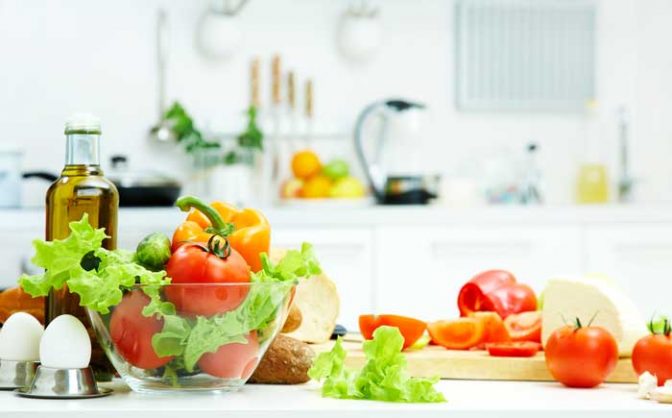28 Oct 2017 2 mins read Tips and Guides

Summer is now fast approaching in Sydney, and a bounty of delicious seasonal fruit and vegetables comes with the warm weather. However, keeping them fresh can be a challenge. Most of us don’t have enough time to visit grocery stores daily to get fresh produce, and instead, we buy everything at once. Sadly, with even the best intentions and big appetites, by the weekend, we often find our fridges and pantries full of bruised fruits and mouldy veggies.
Thankfully, all that good food doesn’t have to be in the bin. With just a little effort and extra attention, there are many ways of keeping your greens and fruit in prime shape for a summer shake or cake.
In today’s blog, we would like to share tips and tricks on keeping your fruits and vegetables fresher for longer before Sydney’s weather gets hot!
– Wash your berries in hot water.
Do you often cool yourself down with cold and fresh berries topped with some creme fraiche? Unfortunately, uneaten berries can go mouldy overnight even with a good appetite and fridge. The best way to stop the onset of the fungus is to give your berries a hot bath before storing them. The process is called ‘thermotherapy’ and can be easily done. Just grab a plastic bowl, put your berries in and pour in some hot, previously boiled water. The hot water kills off mould spores and lets them stay fresher longer. After bathing the berries, spread them out on a towel to allow them to breathe and store them.
– Keep tomatoes OUT of the refrigerator.
Most of us love eating tomatoes all year round, but keeping them from rotting in the hot Sydney summer can be difficult. One of the most common food storage mistakes is keeping tomatoes in the fridge when storing them in cold temperatures makes them lose their flavour and can ruin their texture within just a couple of days. As refrigerator specialists, we recommend putting them in a paper towel-lined bowl that closes at the top. The most tender part of a tomato is directly around the stem, making it easy to bruise. Room temperature is preferable when it comes to storing these types of vegetables, and make sure to keep them away from sunlight and direct heat sources such as kettles, ovens, etc.
– Wrap your leafy veggies.
Leafy vegetables should be eaten within 2-3 days of purchase because they quickly lose most of their nutrients and go off. The best way to extend your green’s freshness is to wrap the unwashed leaves in a paper towel to absorb any excess moisture. After wrapping your lettuce, kale, etc., please put them in a plastic bag and keep them in your fridge. Get rid of rotten leaves from the bunch before storing and keep different varieties of vegetables in separate bags or containers.
– Freeze your fruits and veggies.
If you overestimated how quickly you could eat your fruits or veggies, the best way is to freeze them for future use. You can freeze the majority of them, but the most popular are strawberries, blueberries, bananas, eggplant, mushrooms, onions, beans, broccoli, peppers, chillis, cucumbers, cabbages, brussels sprouts, and the list goes on! Just rinse them in hot water before sticking them in below-freezing temperatures.
If you would like to learn more about JD Refrigeration and our commercial refrigeration services, visit our website: www.jdrefrigeration.com.au
